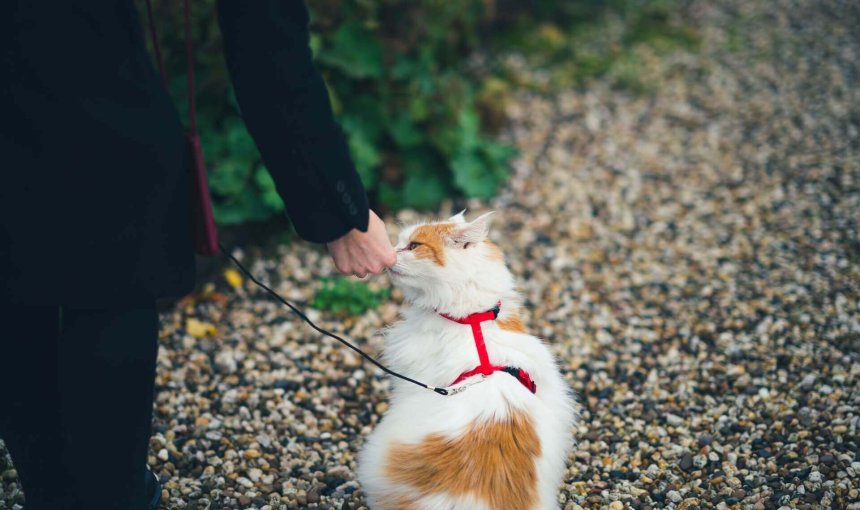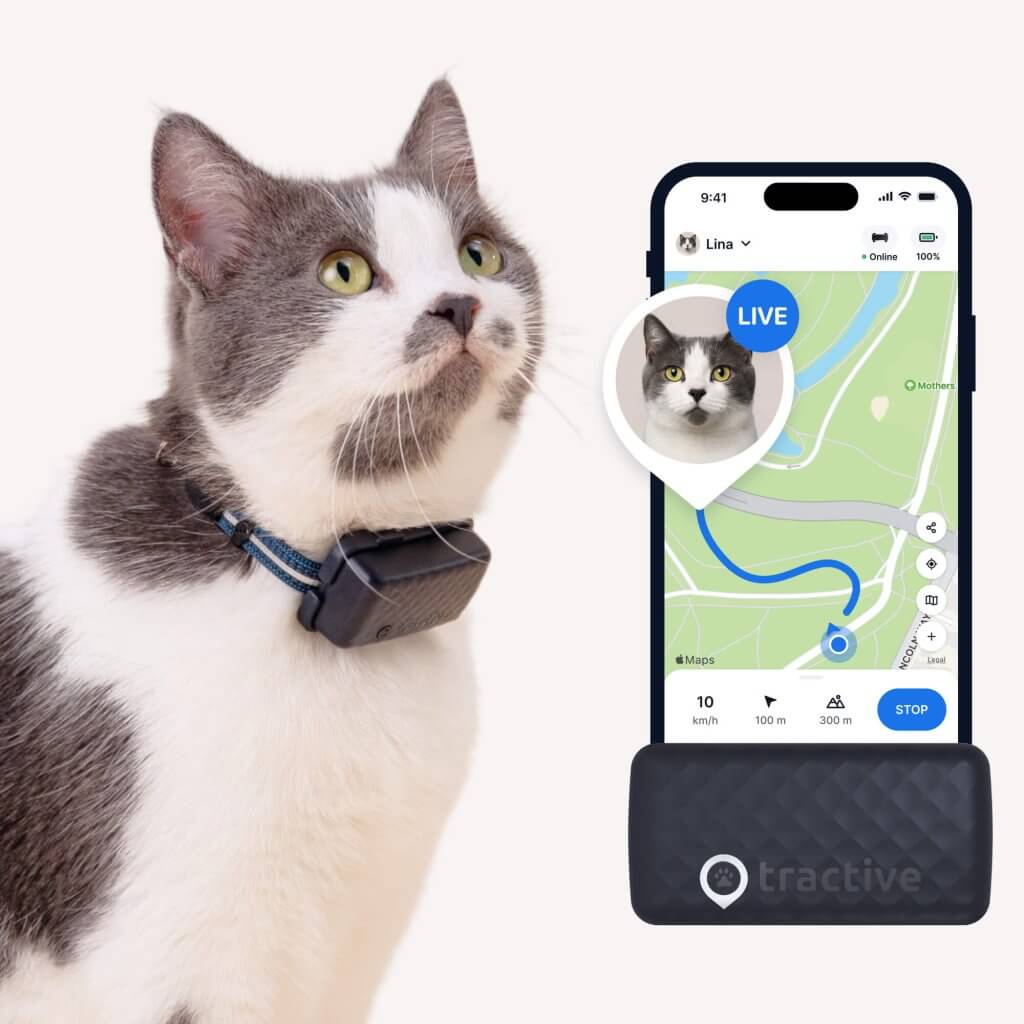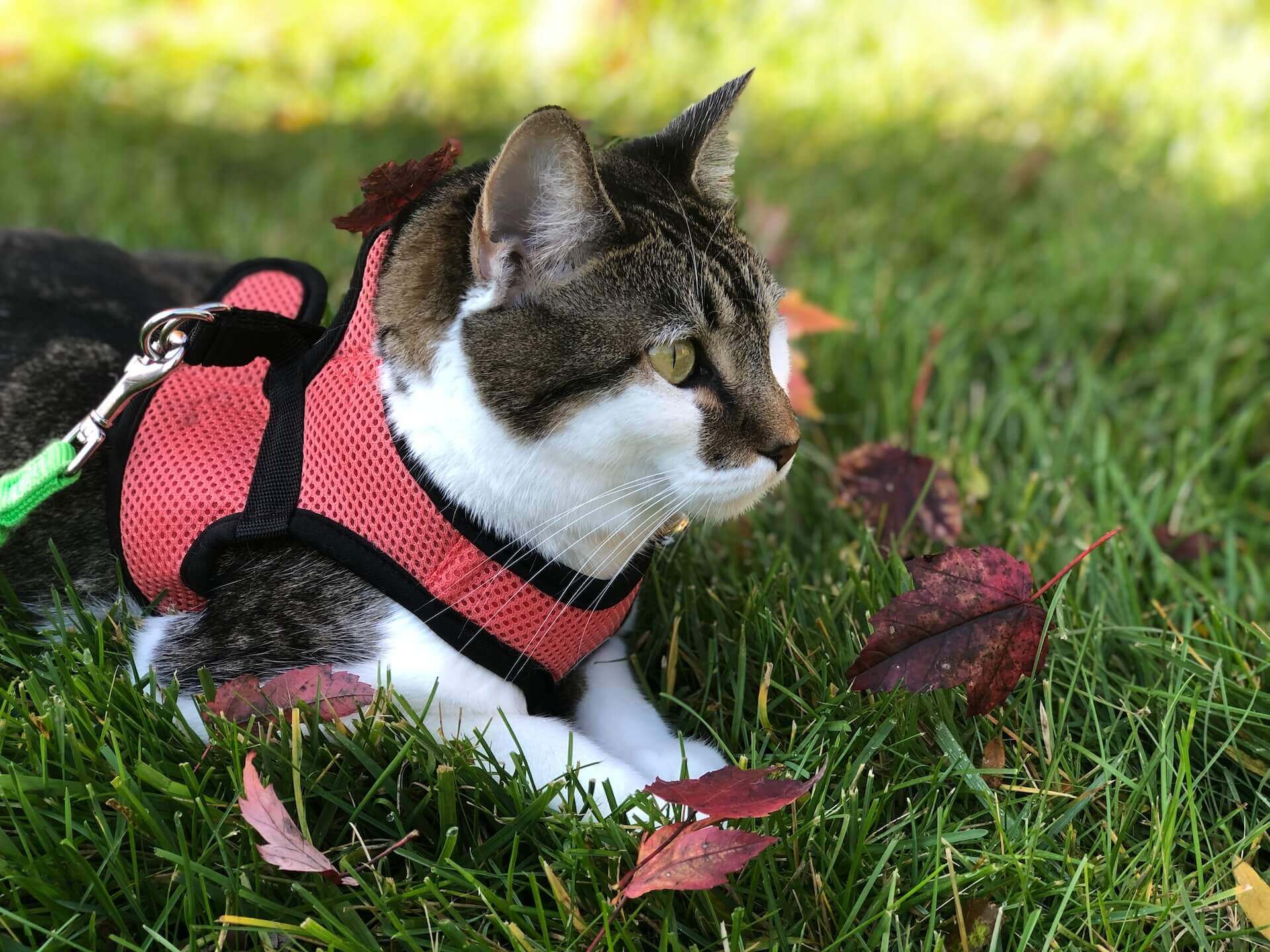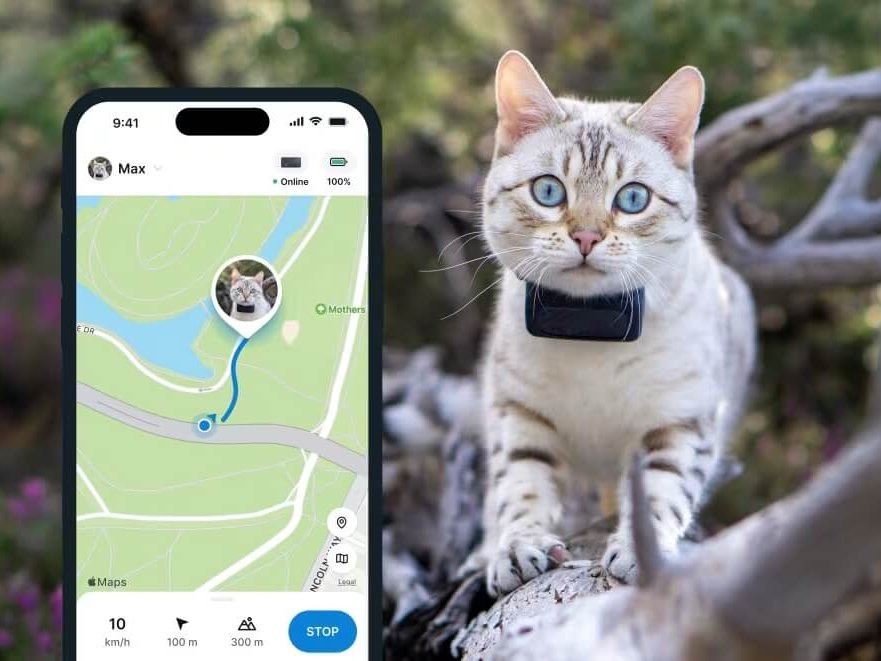How To Harness Train A Cat In 6 Easy(ish) Steps
A cat harness is an important safety measure if you want to give them some supervised outdoor time. Here's how to get started, how to troubleshoot, and what to do in case they escape.

Much like dogs, cats also need a good dose of the outdoors – plus the physical and mental stimulation – to stay healthy. But like dogs…how might cats respond to protective gear like collars or harness? You might’ve stumbled on here, wondering: how to harness train a cat? Here’s how to get started in 6 easy(ish) steps, how to put it on properly, and where a cat GPS tracker can help as an emergency measure.

Find out where your cat spends their time.
Read moreAre harnesses safe for cats?
Yes, harnesses are generally safe for cats, as long as they’re appropriately-sized and comfortable. As a rule of thumb, you should be able to fit 1-2 fingers between the harness and your cat. Always attach the leash to the harness, not your cat’s collar. (Or they might choke!)
Be sure to supervise your cat when they’re wearing the harness. Likewise, only use the harness on walks with your cat; it should never be left on your cat 24/7.
Finally, plan ahead for your cat running off – even if they’re harnessed. Cats run away for all sorts of reasons. (Like smelling a female in heat nearby, sensing some prey animal in the distance, or because they got spooked by some other pet or person.) And it only takes a few seconds of negligence for your cat to have disappeared miles away from safety.
💡In these emergency situations, a cat GPS tracker can be a potential lifesaver. With just a glance at your phone, you can start tracking your cat’s movements in real-time, no matter how far they wander – and rescue them before they head off too far.

Track your cat wherever they go
Get real-time location information, wherever they go. Find out when they go somewhere they shouldn’t, with Virtual Fences. And discover their favorite spots with Territory.
Pros & cons of cat harnesses
| Pros | Cons |
| A harness lets your cat enjoy the outdoors safely without the risks of free roaming. | A harness can limit your cat’s movements, like their ability to fight or flee from a threat. (Like a dog or another animal.) |
| Cats on a leash and harness will be less likely to face accidents or injury from other cats, wildlife, or cats. | A cat wearing a harness is more likely to get caught on something – like a tree or a fence. |
| A harnessed cat is less likely to get lost. And with a collar and ID tag, less likely to get mistaken as a stray. | Your cat might not take well to the harness and even slip out of it or escape somehow. |
With all these points in mind, your cat should only wear a harness for a limited time during the day (during walks with you) when they’ll be supervised.
How to choose the right cat harness
Not all cat harnesses are made alike. Some are minimal in terms of fabric and contact area; others offer more coverage and a more secure fit. You can choose from these types of cat harnesses:
- figure-eight style harness
- H style harness
- vest harness (see photo above)
- jacket harness (covers even more of the cat’s body than a vest harness)

Cat harness sizes
Cat harnesses come in different sizes, so be sure to choose the correct size for your cat. Note that sizes small, medium and large can vary in terms of actual size among cat harness brands. For best results, measure your cat before buying a cat harness. Take a flexible measuring tape and measure around your cat’s chest, just behind their front legs.
Best cat harness material
The material should be soft and comfortable for your cat, so avoid any materials that are known to irritate your feline.
How to harness train a cat in 6 simple steps
- Introduce your cat to the harness
Let your cat sniff and check out the harness first. The goal is to help them perceive it as non-threatening – which might take a while, since some harnesses can look quite “snakey.” - Let your cat get familiar with the harness
Leave the harness sitting beside the cat’s bed or food bowl for about 1-2 weeks before you ever put it on. This way, your cat can begin to recognize it as a familiar object. - Gently put the harness on your cat
Skip ahead to our section on how to put a harness on your cat the right way. But remember to go slow and take it one step at a time. - Reward your cat plenty
Whenever your cat cooperates, give them all the attention, praise, pets, and treats they can get. If your cat doesn’t, ignore this behavior. Over time, you want to help them build a positive association with wearing the harness. (Just remember to be consistent when you reward them.) - Monitor your cat’s behavior
Keep an eye on how your cat responds to wearing the harness. If your cat acts normally after the harness is on, keep going. In case your cat reacts poorly to wearing the harness, read how to handle this below before moving on to step seven. - Build practice with your cat wearing the harness
Allow your cat to wear the harness for 10-15 minutes per day and provide them with plenty of positive reinforcement and healthy distraction while doing so. Soon, you can extend the time your cat wears the harness and start taking short walks outside or in the garden.
How to put on a cat harness the right way
Follow the instructions below to put a cat harness on your cat correctly. If your cat lets you, you can place a hand over their chest to stop them from moving while you attach the harness. Alternatively, you can give them food to distract them while you put on the harness.
First, take a moment to orient yourself with the harness. Distinguish between the smaller head loop and the larger chest loop. Unbuckle or open the harness where necessary. Next, here’s how to place the harness on your cat.
- Figure-eight or H style cat harness: Place the smaller loop over the cat’s head and close the buckle if necessary. The ‘waist’ of the figure 8 shape or the connector of the H style harness should lie on the cat’s back, between the shoulders. Next, fasten the buckle to close and attach the larger loop around the cat’s chest.
- Vest or jacket harness: Place the harness on your cat’s back or underneath its stomach depending on the style. Fasten the neck and chest buckles or slips. Make sure that the leash latch is on the cat’s back.
Be sure to straighten out any twists so that the harness can sit comfortably on your cat. Adjust the length of the straps and fit of the harness until it is snug, but still leaves room for you to fit about two fingers between the cat and the harness.
What to do if your cat does not respond well to the harness
If your cat seems confused or stops moving after you put the harness on them, they may need a little extra time to get comfortable wearing the harness. Here’s what you can do in that case:
- Get their favorite toy and move it around to get their attention. This should help them forget about the harness and move around again.
- Feed your cat before, during, and after putting on the harness.
- If this still doesn’t work…
- keep the harness-wearing sessions short
- give your kitty lots of praise and
- reward them with treats for wearing the harness
Don’t try to force your cat to wear the harness. Everyone has a bad day, and your cat does too. Warning: if your cat starts to panic, stop the exercise and try again in a few days.
More tips for cat harness training
So that you and your cat can enjoy walking on the leash with a harness, keep these tips in mind:
- Give your cat enough acclimatization time
A harness and leash is a completely new experience for most cats. So be patient. - Give your cat some space
- They have different movement patterns than dogs, so be careful not to rush them.
- Be careful not to take long walks
Cats are not long-distance runners. 15-20 minutes can be enough at the beginning. You can gradually increase the time. Add small breaks to longer trips and don’t forget to let your cat quench their thirst with water. - Watch out for possible encounters with birds and dogs
Cats can even react aggressively to strangers of their own kind, so it is best to avoid such encounters. It is recommended that your cat only walks with you at first. - Choose quiet places for the first walks. Prefer meadow areas instead of busy streets and busy times of the day and avoid dog exercise areas.
And if your cat slips out the harness…
- Use a cat GPS tracker as an emergency measure
Even with the best training and precautions, accidents can happen – your cat might get startled by a sudden noise, slip out of their harness, or take off after a bird. But by attaching a Tractive GPS tracker to your cat’s harness or collar, you gain peace of mind knowing that if they ever escape or go missing, you can track their real-time location and quickly bring them back to safety.

With a little patience and lots of love, even the most unlikely cats can get used to wearing a harness. While cat harnesses do restrict some of your cat’s natural movement, they’re still a great way to offer your cat enriching outdoor time while keeping them out of harm’s way.
Did you like this post? Share it with a fellow cat parent – and let’s help build a safer, kinder world for our furry friends together.



